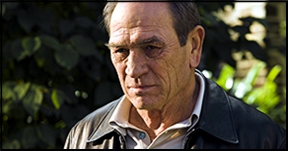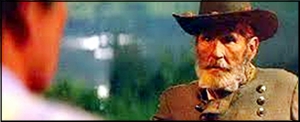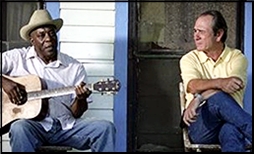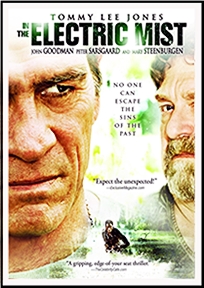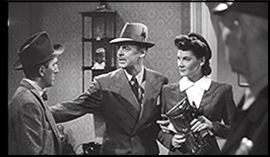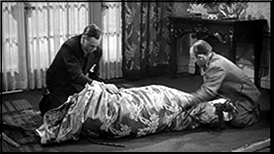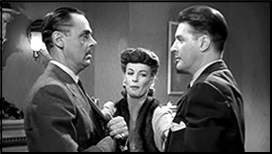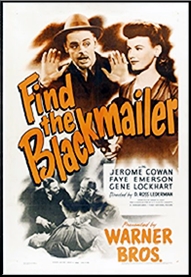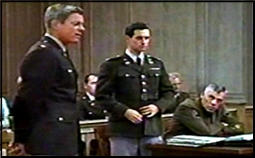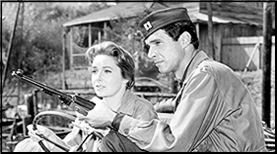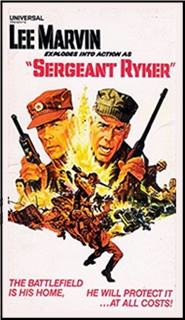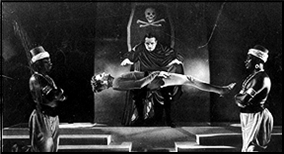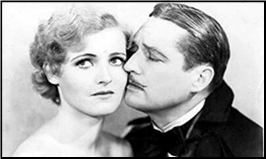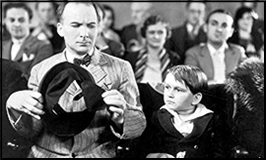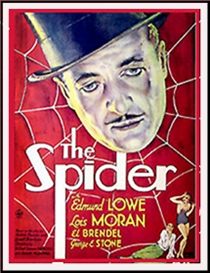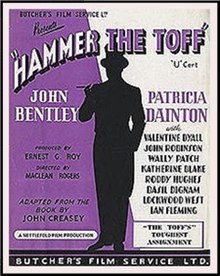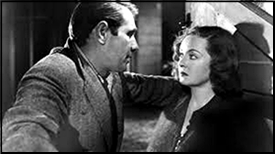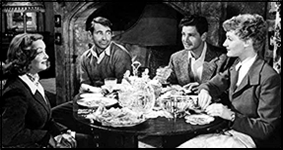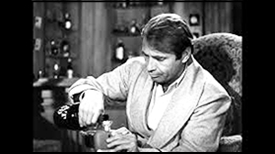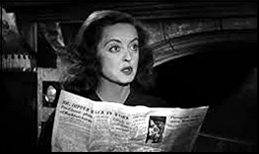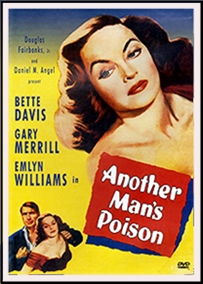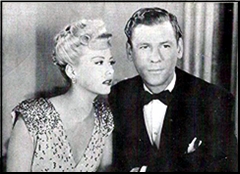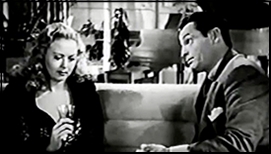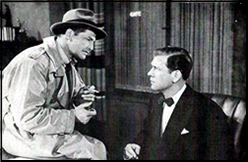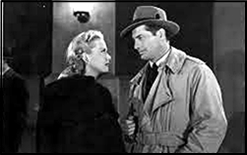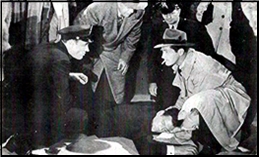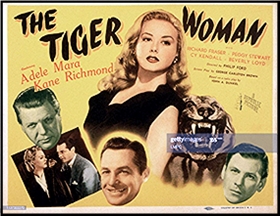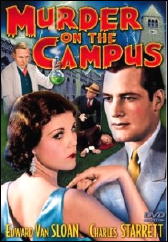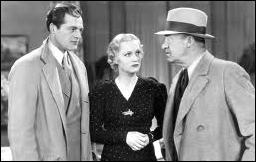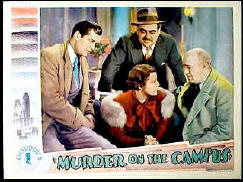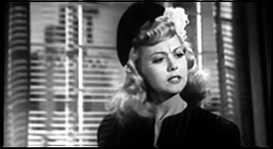REVIEWED BY DAVID VINEYARD:
HAMMER THE TOFF. Butcher’s Film Service, UK, 1952. John Bentley, Patricia Dainton, Valentine Dyall, John Robinson, Roddy Hughes, Wally Patch. Screenplay John Creasey, based on his novel. Directed by Maclean Rogers.
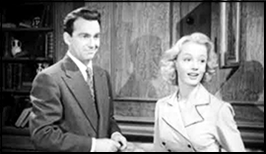
An elegant top-hatted figure in white tie and tails, sporting a long cigarette holder, walks out of a West End club and is silhouetted against a wall, introducing us to the titles, and to the Honorable Richard Rollinson, aka the Toff.
This once “lost†film is currently available on Amazon Prime.
In this case the Toff is played by popular British leading man John Bentley (Calling Paul Temple) whose career in the late forties, fifties, and sixties spanned British film and television, often as not in crime films.
It’s just about perfect casting too, with Bentley managing to be suave, tough, smart, romantic, and all with an appropriately light touch in this extremely faithful adaptation of the John Creasey novel that manages to pack just about everything and everyone in from the popular book series (alas, no Aunt Gloria).
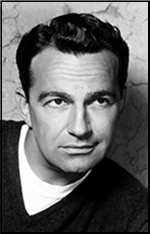
For anyone who came in late, the Toff, Richard Rollinson, is a well-born amateur crime fighter well connected at Scotland Yard with his friend Inspector Grice (Valentine Dyall) and in London’s criminal East End with pub owner and ex-prize fighter Bill (here Bert) Ebbuts (Wally Patch). Aided by his valet and invaluable man Jolly (Roddy Hughes) Rollinson, known as Rolly to his friends, cruises on the sunny side of the law but only just, leaving behind his calling card, a caricature of a man in top hat, monocle, and smoking a cigarette in a long holder.
Hammer the Toff was Bentley’s second outing as the Toff, Salute the Toff coming earlier (1951), and turns out to be a fast-paced and well done B level thriller from the reliable Maclean Rogers.
As in the Creasey novel, we are plunged right in when Rolly, on holiday, enters a compartment on a speeding train occupied by beautiful Susan Lancaster (Patricia Dainton) just moments before two men on a waiting hill side fire into the compartment as the train passes.
Without much ado we discover Susan Lancaster’s uncle (Ian Fleming, who was the intended victim on the train) has a formula wanted by a criminal who calls himself the Hammer. In typical style the Toff foils two Spaniards who try to rifle Susan’s hotel room, and throws himself full into the investigation, but the next day when her uncle is murdered in front of him and Susan in a crowd all seems lost.
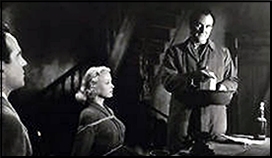
From his friend Grice, Rolly learns that the Hammer was a Robin Hood type well loved in the East End who suddenly a few months earlier committed a murder and has since turned deadly. He wants the formula, which Susan has no idea where it may be, and will stop at nothing to get it.
Rolly, being Rolly, takes Susan into his and Jolly’s protection after thwarting an attempt to kill Susan with a poisoned syringe in a brief case, and at Grice’s request heads for the East End to try and use his connections there to get a hand on the Hammer.
What he finds surprises him, because the East Enders insist the Hammer is innocent, a Robin Hood above suspicion (a nod surely to fellow Thriller alumni Leslie Charteris and the Saint in his early outlaw days), and when Rolly arranges to meet with him he is impressed with the man named Linnett (John Robinson) who swears he is being impersonated, but determined to uncover the fake Hammer and mete out his own justice.
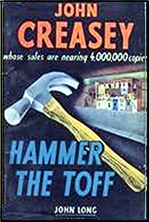
Unfortunately before Rolly can finish feeling Linnett out the police arrive and Rolly finds himself unjustly hated by his East End friends for having betrayed the Hammer.
From then on the film races to the finish, with mysterious messages hidden in plain sight, evil minions, angry former allies in the East End, the fake (or is he?) Hammer, and an uncomfortable truce between the Toff and the (real?) Hammer.
Hammer the Toff is a fast moving B, well written (credit to Creasey for getting so much of the book into a 71 minute format without being crowded), attractively played, well directed by an old pro, and obviously with some expense in terms of sets and location photography. Among other small favors they get the Toff’s flat almost exactly as I imagined it in the books, right down to the entrance and his collection of trophies, a nice touch for any film based on a popular series of books.
If you like the Toff, Creasey, and British B thrillers in general, this is an attractive and well done entry in a series that sadly didn’t go anywhere.
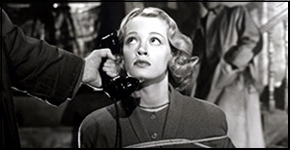
Truth is, the Toff just didn’t fare very well outside of The Thriller and books. In addition to the two films the Toff appeared in several black and white comic digests in the Super Detective Library, and two BBC radio serials (“The Toff and the Runaway Bride” and “The Toff on the Farm”). It wasn’t until the mid-1960s and the Pyramid paperback reprints here that he even had an American imprint, though the Baron had appeared early on.
The television version of this book was just an episode of Patricia Dainton Presents from 1958 edited from this film.
But for long time fans like me, this is a delightful chance to see Creasey’s creation in action, with John Bentley just about perfect as the Toff we know and love. He’s the face I will associate with the character from now on, and that is a compliment.
